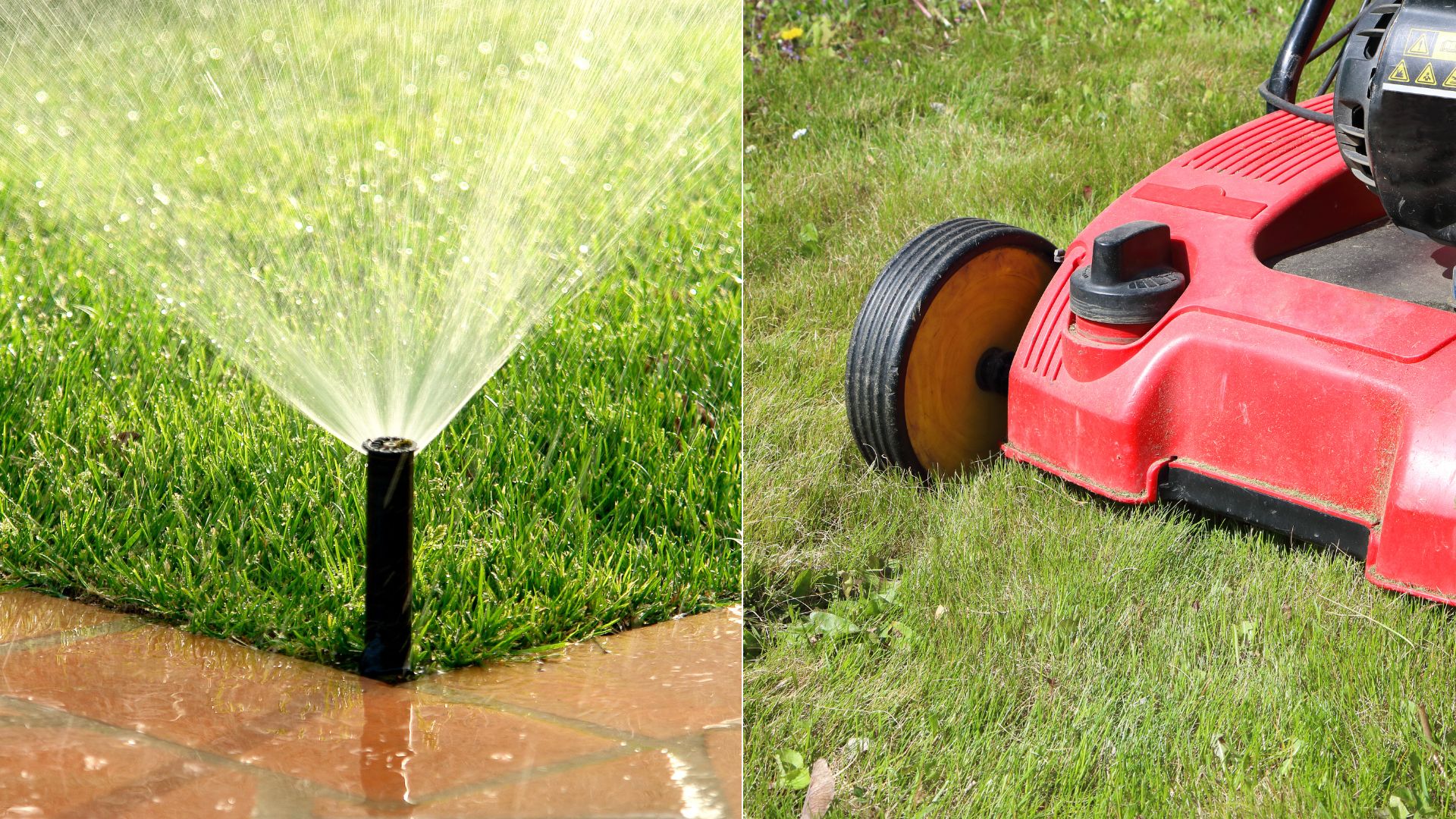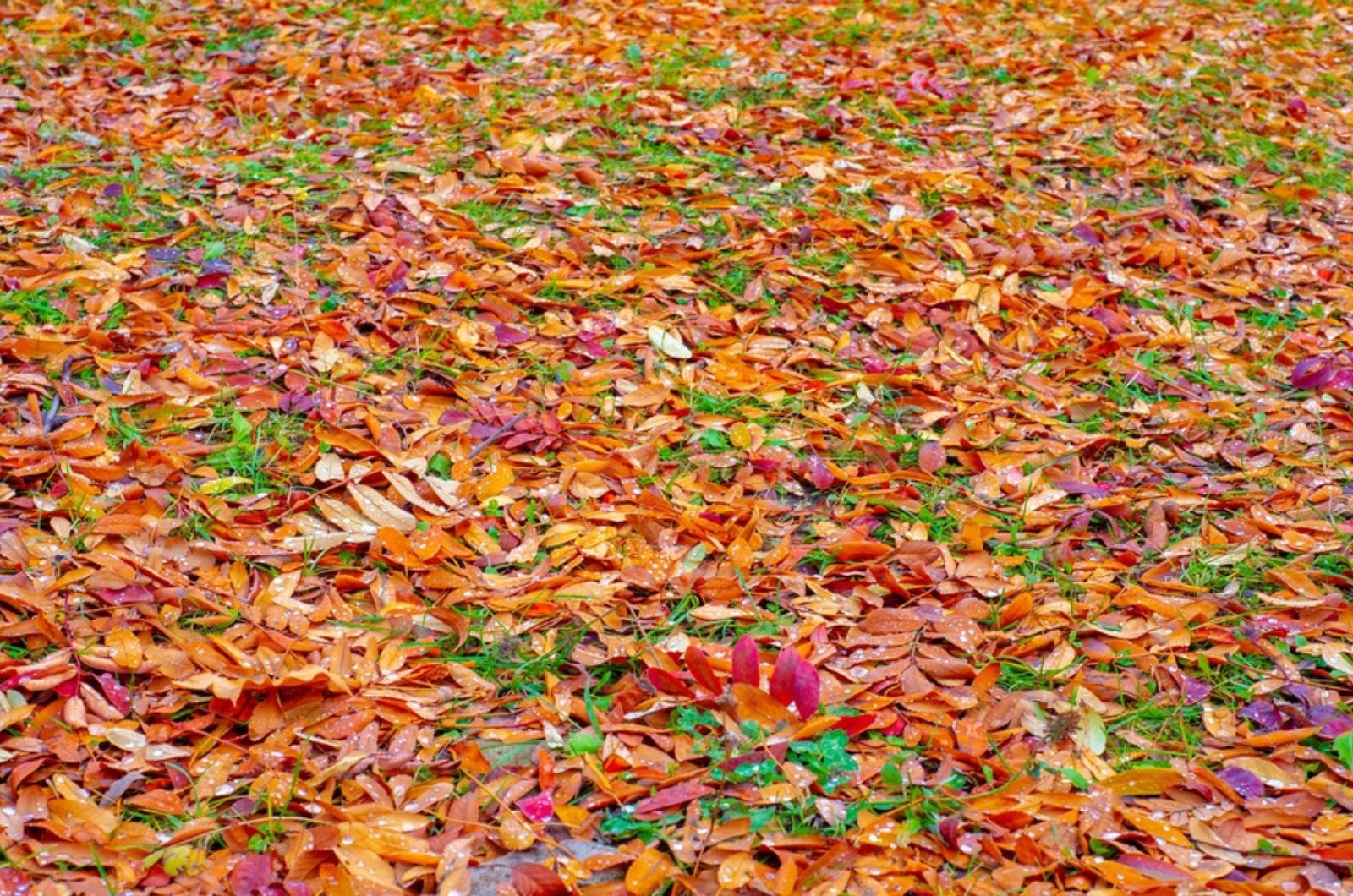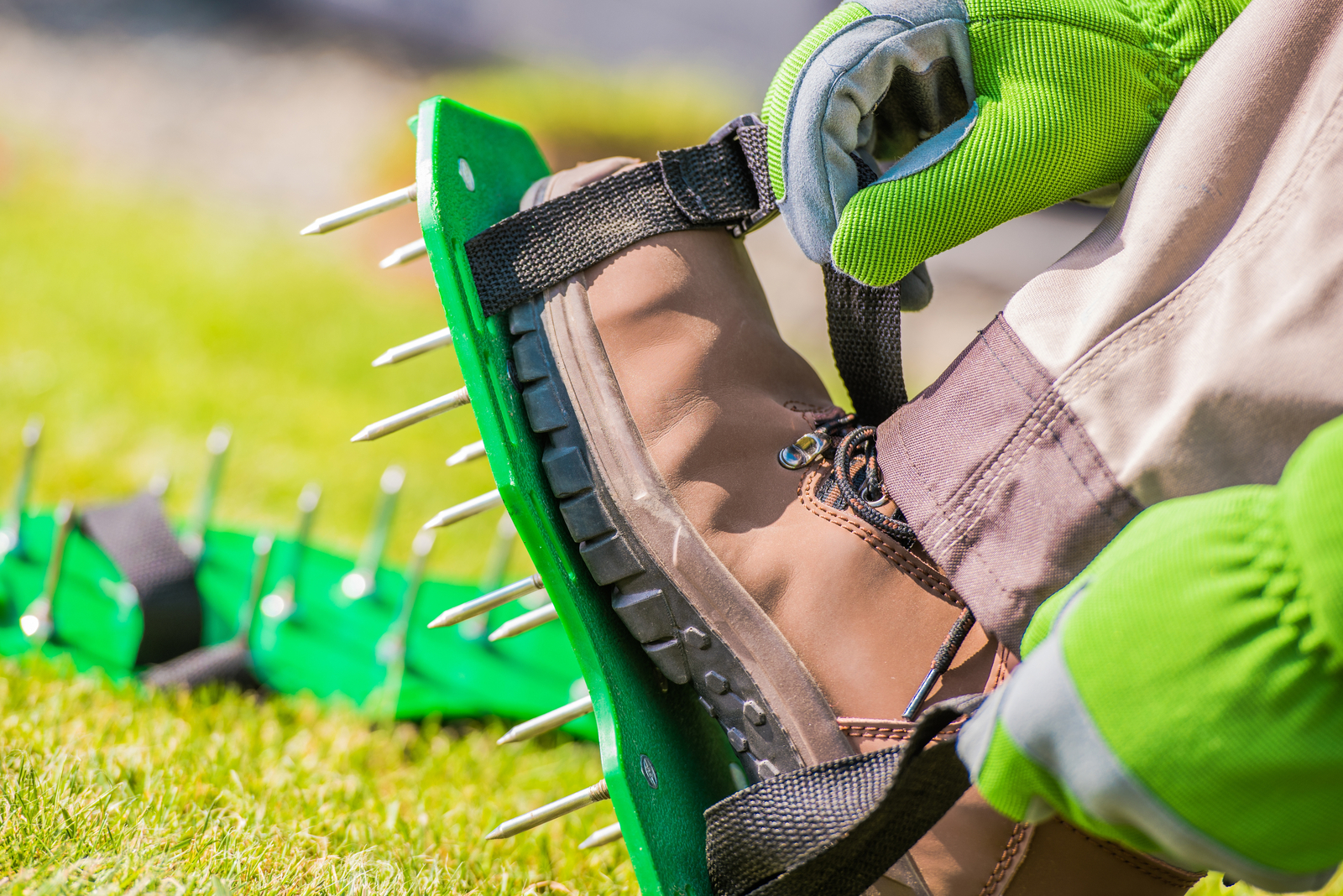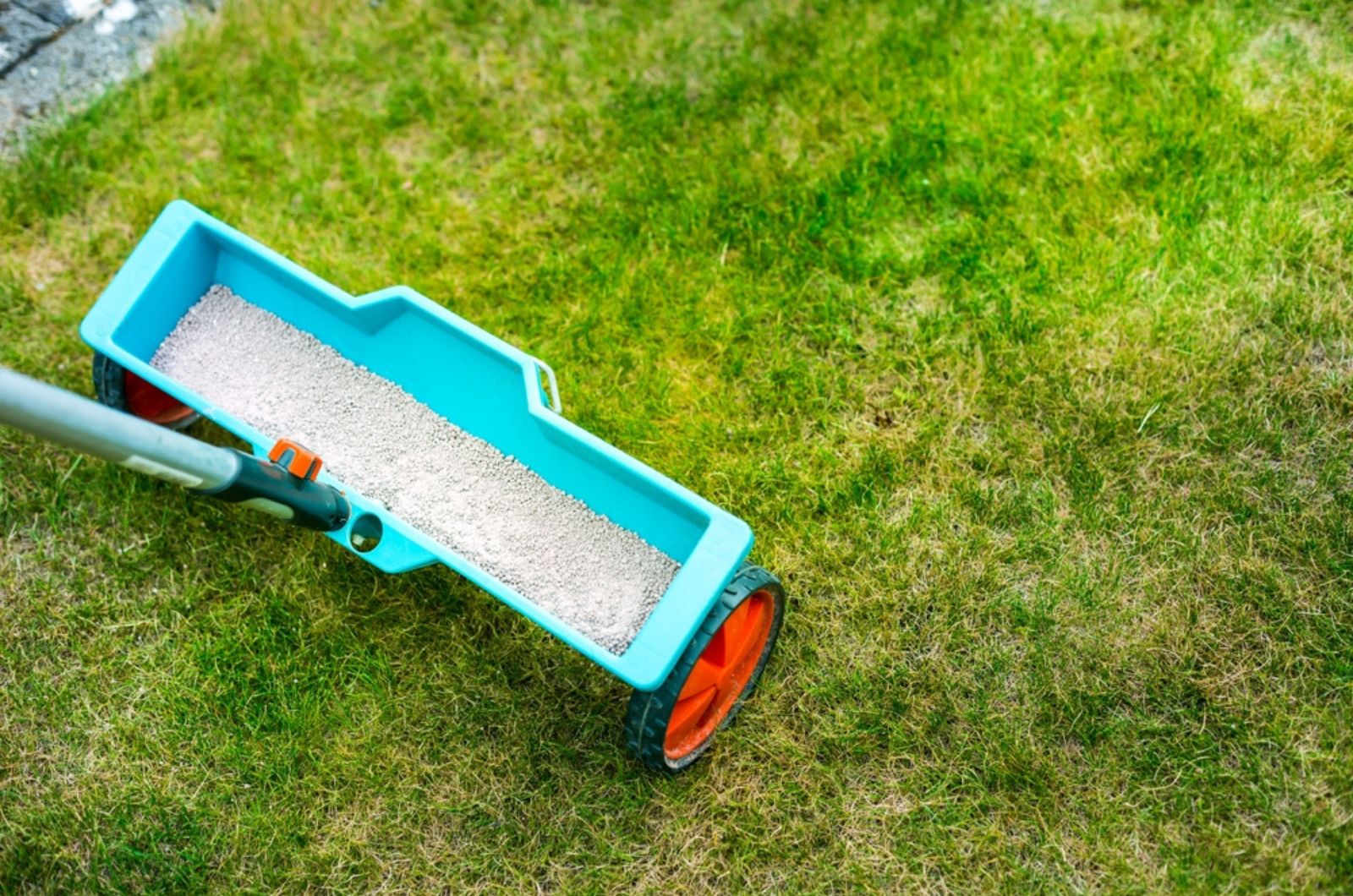Fall lawn care involves preparing it for winter and preventing it from dying during the colder months.
That means no extensive fertilizing, frequent mowing, or any other job that will take a long time for it to recover.
On the other hand, there are some jobs you should do if you want your lawn green and thick come spring. You have to find balance.
Here is a list of all the things you shouldn’t do, or forget to do, in November in order to keep it lush all year long.
Let’s get started!
#1 Overwatering
One trick that will help you maintain your lawn all year long, even in late fall and winter, is watering it just enough. This particularly means avoiding overwatering it late in the season, such as November.
The fall season usually means rain, so you shouldn’t give your lawn too much supplemental moisture during this period. It can lead to fungal infections and cause your grasses to develop shallow and weak root systems.
Cooler temperatures mean less evaporation and less need for extra moisture. That’s why you should irrigate your lawn only when there’s been a prolonged period of drought or if the temperatures will drop below 20°F (to prevent the roots from freezing).
#2 Not Dealing With Fallen Leaves
A layer of fallen leaves on your front lawn does seem idyllic, but it’s not something you should strive for. It can block sunlight and trap moisture, causing much harm to your lawn.
Your grasses won’t get sunlight or air, which increases the risk of pest infestations and diseases. Wait too long, and you’re bound to see yellow and brown patches on your lawn.
Luckily, you can easily solve this problem by frequently raking the leaves. Afterwards, you can make your own leaf mulch and feed your garden to prepare it for spring or summer planting.
#3 Dethatching
Even though raking leaves is beneficial and I encourage it, dethatching your lawn is something you should avoid in November.
There are benefits and drawbacks of dethatching the lawn, but this late in the season, you’ll only get cons. It will do a lot of damage to your grasses, which won’t have enough time to recuperate before winter arrives.
And if you didn’t do it in early fall, just wait until early spring if you have cool-weather grasses, or late spring or early summer for warm-season ones.
#4 Forgetting To Aerate
Aeration is an essential part of November lawn care, especially if you notice puddles forming in your front yard after it rains.
This will increase soil drainage and help your lawn deal with heavy fall and winter rains. Aeration will also reduce the risk of fungal diseases such as root rot and will help control moss.
And once you finish punching holes, you can move on to some jobs you can do after aerating the lawn, such as fertilizing.
#5 Applying Weed Killers
Another thing you can do after aerating your lawn is apply weed killers, but that’s not something I’d recommend doing in November.
They will have minimal effect during this time because the weed growth also slows down and the heavy rains may wash it off.
But if you have to deal with these nuisances at this time, you can find other methods for getting rid of weeds from the lawn, such as pulling them out by hand.
#6 Late Fertilizing
There is nothing wrong with feeding your lawn in late fall, but you have to be careful. One way to winterize your lawn is by using special fertilizers in October and November if you have cool-season grasses.
Classic lawn fertilizer that is rich in nitrogen will encourage your grasses to produce lush new growth, but that’s something you don’t want in November. It will be too weak and tender to deal with the winter conditions that will soon set in.
Instead, opt for a fertilizer that contains plenty of potassium, which will make your grasses less susceptible to pest infestations and diseases. (1)
Slow-release fertilizers are perfect for this time of year because they will feed your lawn for longer.
Finally, you should apply them before the temperatures drop below 50°F.
#7 Short Mowing
If you want to make your lawn green and thick, you should avoid mowing it too short, especially in late fall.
Short mowing will leave your grasses prone to diseases and more vulnerable to weed invasion.
And what’s more, this should be the last time you mow your lawn before winter, so make it count. Set your mower’s height to the highest and make sure not to remove more than a third of the entire grass growth.
References:
1. Sardans, J. & Peñuelas, J. (2021). Potassium Control of Plant Functions: Ecological and Agricultural Implications. Plants.




